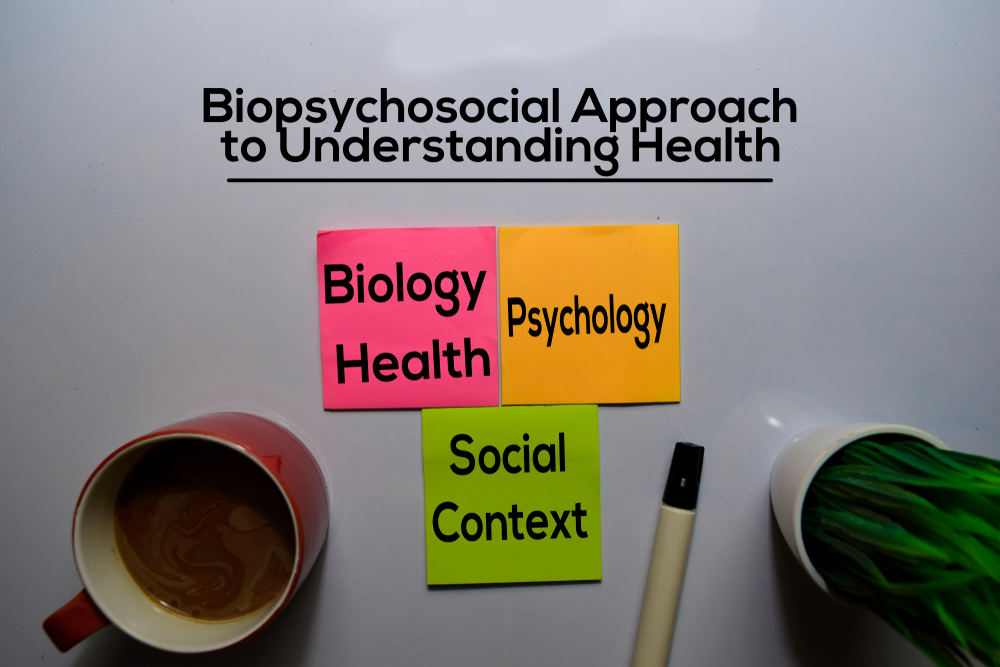
Post-traumatic stress disorder (PTSD) is a common and often disabling mental condition characterised by re-experiencing, avoidance and hyperarousal phenomena. In contrast with the ICD-11 classification system, DSM-5 also requires negative alterations in cognition and mood associated with the traumatic event for diagnosis of PTSD. ICD-11 has created a new parallel diagnosis of complex PTSD for people with the symptoms of PTSD plus disturbances in self organisation (emotional regulation difficulties, negative self-concept and interpersonal relationship difficulties).
The point prevalence of PTSD in the general population has been estimated at around 3% with individuals exposed to very severe and/or multiple traumatic experiences being at particularly heightened risk of suffering from PTSD. In recent years, significant advances have been made in our understanding of PTSD and the “Special Article” by Prof Richard Bryant, recently published in World Psychiatry, represents an ambitious attempt to succinctly summarise state-of-the-art evidence and challenges for the future (Bryant, 2019).

The point prevalence of PTSD in the general population has been estimated at around 3% with individuals exposed to very severe and/or multiple traumatic experiences being at particularly heightened risk of suffering from PTSD.
Methods
Unusually, there is no stated methodology for this work. The paper is, effectively, an opinion piece from a leading and highly respected researcher in the traumatic stress field. It is clearly a carefully considered review of key literature from one expert’s perspective, but is not a systematic review and, consequently, is prone to bias. That said, have no doubt that this is an authoritative review and full of nuggets of helpful information. It is rare to read a paper of 11 pages that has 191 references published over five of them.
As long as the risk of bias is acknowledged, non-systematic expert reviews can be a great way to access a condensed summary of knowledge and information and Bryant has certainly achieved this. The paper is necessarily an overview and should be recognised as such, rather than a definitive and comprehensive review of all the areas considered; this would require a book rather than an article.
Results
The paper covers many different areas and it is a challenge to adequately summarise the results. The recent changes in the DSM and ICD diagnostic criteria are covered. The focus of the paper is predominantly on the DSM definition of PTSD, understandably as this system has traditionally been preferred for traumatic stress research. Prevalence is discussed, highlighting the well-recognised increased prevalence in females, and apparent significant differences in rates in different geographical locations. Counter-intuitively, the world mental health surveys found prevalence rates in high income countries almost 10 times greater than those in lower middle-income countries. Bryant rightly points out the likely impact on results of methodological differences in some of the epidemiological studies considered.
An interesting more recent advance in the traumatic stress field concerns the longitudinal course of PTSD; four distinct trajectories have been found in a number of studies (resilient, recovery, delayed reaction and chronic distress) and increasing evidence suggests that PTSD can be a relapsing and remitting condition. The introduction to research using the relatively novel and emerging methodological techniques of network analysis and latent growth mixture modelling is helpful as are the new insights they are providing.
The brief consideration of neurobiological models of PTSD, not least concerning the hypothalamic-pituitary-adrenal axis, amygdala, prefrontal cortex and hippocampus will not be new to those already working in the field but a good reminder and a useful introduction to those new to the field. More novel to most readers will be the neurobiological consideration of why females are twice as likely to develop PTSD as males with evidence suggesting that sex hormones may play an important role in this. Another area of increasing interest concerns genetic factors; recent work has found the heritability of PTSD to be similar to that of depression (Nievergelt et al, 2019). The paper also touches on childhood adversity modifying genetic risk, a likely key area for further investigation in the future.
From a psychological perspective, Bryant focuses on cognitive behavioural models of PTSD, the influence of excessively negative appraisals and attentional bias towards threat. The psychological treatment section’s focus is also cognitive behavioural, trauma-focused cognitive behavioural to be exact, with these treatments identified as being the most effective currently available for PTSD, with pharmacological treatments being less effective. Some more recently investigated interventions with emerging evidence of effect are also considered, for example MDMA-assisted psychotherapy.
Bryant considers a number of challenges for the future, including a diagnostic conundrum given the divergence between DSM and ICD. Delayed onset PTSD is also highlighted along with the critical challenge of providing effective treatments to people with PTSD in poorly resourced countries.

Amongst other things, this review looks at the neurobiological consideration of why females are twice as likely to develop PTSD as males, with evidence suggesting that sex hormones may play an important role in this.
Conclusions
Bryant notes that although we have treatments that can work, many people with PTSD do not respond optimally to them and many more are not able to access them. He ends with a call to action by stating:
Identifying novel mechanisms that can be translated into optimizing treatment outcomes, and overcoming the major barriers facing most health systems in delivering evidence-based treatments, should remain the top priorities for the field of traumatic stress in the years to come.

Prof Richard Bryant says that we have safe and effective treatments for PTSD, but many people do not respond optimally to them, and many more are not able to access them.
Strengths and limitations
The key strength of this paper is the presentation of a broad, easily accessible and up to date review of a number of important areas in the traumatic stress field, written by an authoritative and highly respected expert. For interested practitioners who are after a succinct update, this is a good place to start.
The main limitation is the absence of a formal methodology and critical appraisal of the individual studies included. This gives the impression of a degree of selective use of referencing to support particular viewpoints and the inclusion of some personal views of the author that may not be accepted by everyone in the field.

This paper is not a systematic review. It is a carefully considered review of key literature from one expert’s perspective and is therefore prone to bias.
Implications for practice
A key implication for practice is that there are a number of effective treatments for PTSD that all practitioners seeing people with PTSD should be aware of and in a position to help facilitate the receipt of. The treatment sections provide an overview and should not be seen as definitive. I would strongly recommend interested practitioners to consult up-to-date guidelines generated from systematic reviews to inform their practice rather than relying on this paper alone (e.g., NICE, 2018; ISTSS, 2018). A number of more novel treatments with at least emerging evidence of effect are not considered and eye movement desensitisation and reprocessing (EMDR) is considered a trauma-focused cognitive behavioural therapy, which is somewhat controversial and not the stance taken by most systematic reviews and treatment guidelines.
Although pharmacological treatments are not first line treatments for PTSD, they are taken by many people presenting to services. It is true that the effect sizes are lower than for psychological treatments although this is usually in comparison to a placebo as opposed to a wait list control. At the end of the day, the current evidence-base strongly suggests that a number of pharmacological treatments have a small but positive effect on PTSD symptoms and are likely to benefit people with PTSD. This is very important, especially when there is limited availability of practitioners to deliver effective psychological treatments and when people with PTSD are unwilling or unable to fully engage in psychological treatments or do not benefit from them.
With respect to policy, aside from preventing traumatic events, there remains limited knowledge on how to prevent PTSD at a population level. There is, however, good evidence that targeted interventions for people with symptoms of PTSD (from within weeks to years after a traumatic event) can be very effective. Policy-making should, therefore, focus on making evidence-based treatments accessible to people who need them and dissemination and implementation of them at scale across the world will be necessary to achieve this.
There are multiple interesting areas of research that this review opens up, including improved understanding of the underpinning neurobiological and psychological mechanism of post-traumatic stress disorder. Under-considered in the review and yet likely to be critically important are social factors. The consideration of PTSD through a biopsychosocial lens seems likely to bear fruit with respect to future research and practice.
As a clinician and researcher who has, for three decades, focused on improving the outcomes for people with PTSD, this paper underlines not only how far we have come but also how far we have to go.

The consideration of PTSD through a biopsychosocial lens seems likely to bear fruit with respect to future research and practice.
#ISTSS2019 podcast
The 35th Annual Meeting of the International Society for Traumatic Stress Studies is taking place in Boston this week. You can follow the discussions on Twitter using the hashtag #ISTSS2019 or by listening to our conference podcast:
Conflicts of interest
I chair the International Society for Traumatic Stress Studies’ Treatment Guidelines Committee and have received funding from various sources to conduct randomised controlled trials of interventions for the prevention and treatment of post-traumatic stress disorder.
Links
Primary paper
Bryant RA. (2019) Post-traumatic stress disorder: a state-of-the-art review of evidence and challenges. World Psychiatry 2019;18:259–269. https://doi.org/10.1002/wps.20656
Other references
Nievergelt, C.M., Maihofer, A.X., Klengel, T. et al. International meta-analysis of PTSD genome-wide association studies identifies sex- and ancestry-specific genetic risk loci. Nat Commun 10, 4558 (2019) doi:10.1038/s41467-019-12576-w
NICE (2018) NICE PTSD guidelines. https://www.nice.org.uk/guidance/ng116
ISTSS (2018) ISTSS PTSD prevention and treatment guidelines. International Society for Traumatic Stress Studies.
